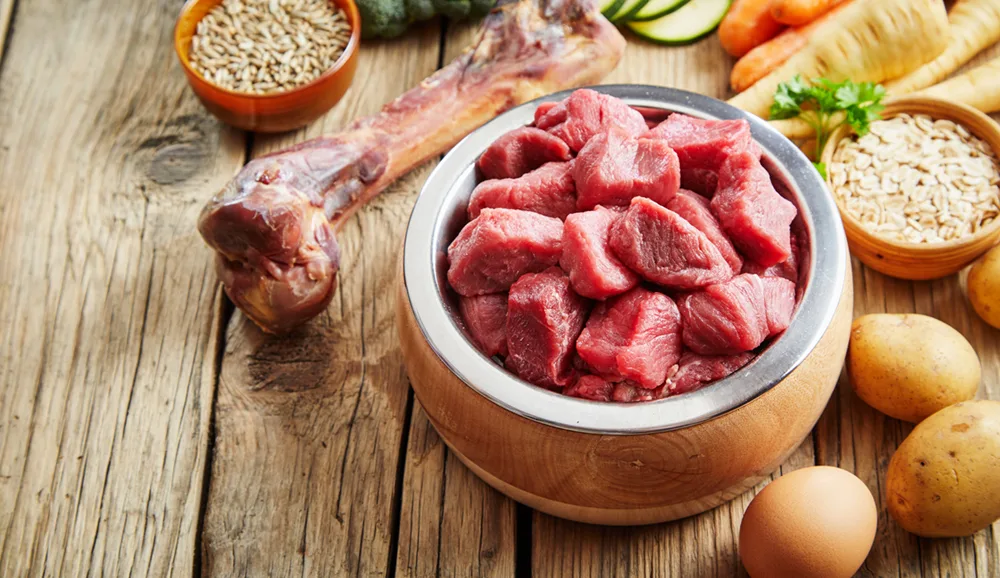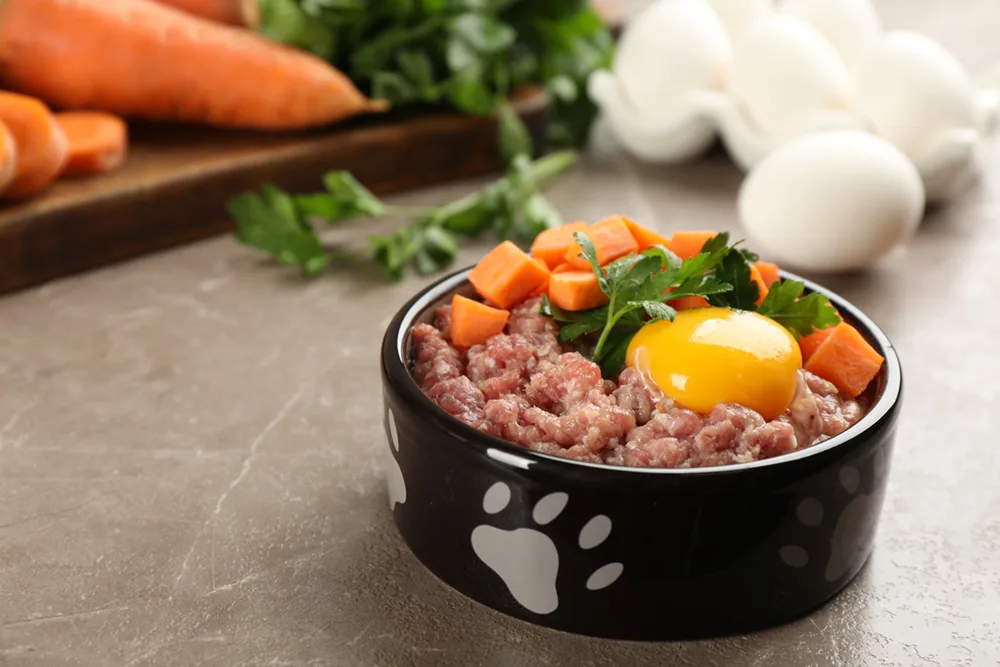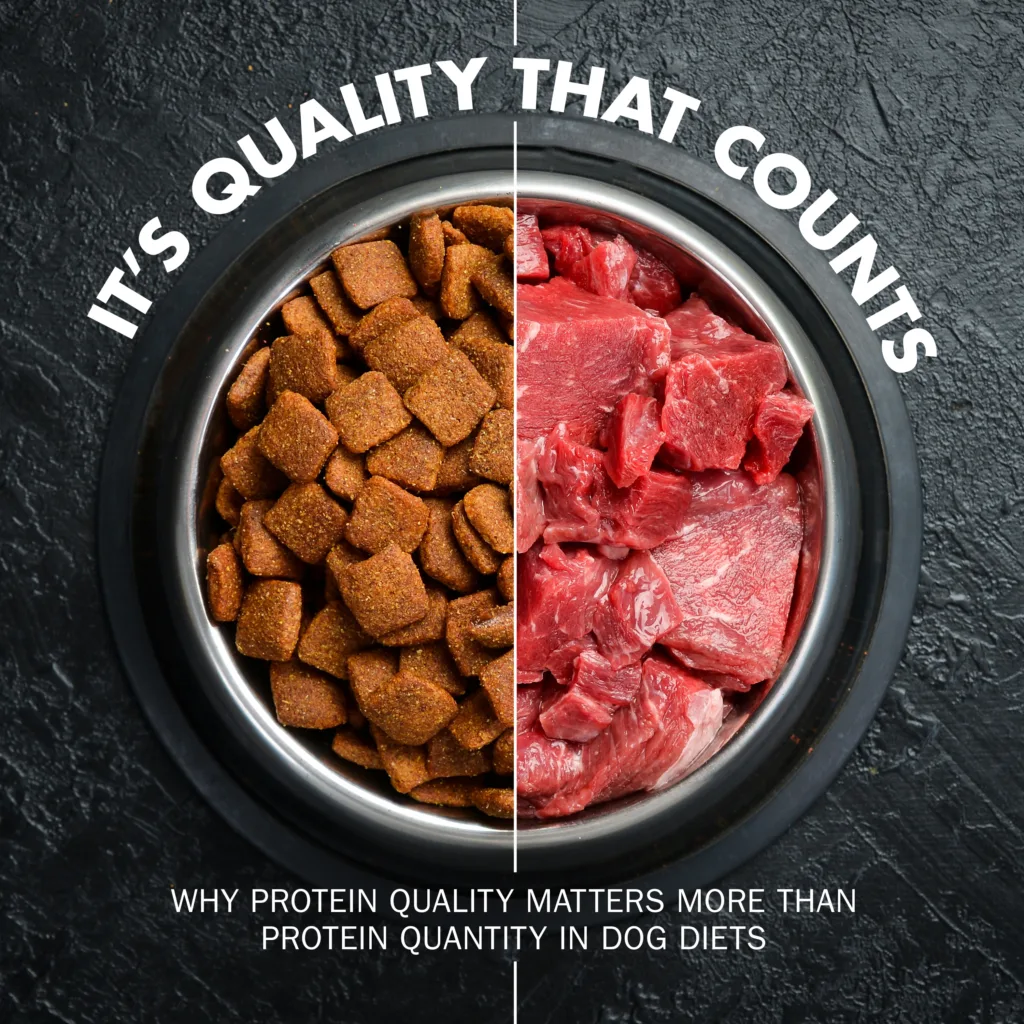When it comes to feeding our dogs, ‘protein’ is one of the first words most owners look for on a label. We know protein is essential for muscle, energy, skin, and coat, so the higher the percentage, the better… right? Not necessarily. What really matters is not just how much protein a diet contains, but where that protein comes from and how easily your dog can use it.

The role of protein in dogs
Protein is made up of amino acids. Dogs need these amino acids to build and repair muscle, produce enzymes and hormones, support the immune system, and keep skin and coat in good condition.
While dogs can make some amino acids themselves, others, called essential amino acids, must come from food. This is where protein quality comes in. A food can be high in crude protein, but if it doesn’t provide the right essential amino acids in usable form, your dog won’t thrive.

Quantity: the crude protein number
Pet food labels usually list ‘crude protein %’ as part of the guaranteed analysis. This tells you how much protein is present by weight, but not how digestible it is or how balanced the amino acid profile is.
A food with a protein percentage of 30% might sound great, but if that protein comes mainly from sources dogs can’t digest well, your dog won’t actually benefit from it.

Quality: what really counts
Protein quality refers to:
- Digestibility, i.e. how well a dog can break down and absorb the protein.
- Amino acid profile, i.e. whether it contains all the essential amino acids in the right balance.
High-quality proteins (like chicken, fish, egg, and certain meats) are highly digestible and provide all essential amino acids. Lower-quality proteins (like some plant proteins, meat by-products, or fillers) may not be as digestible and may lack certain amino acids.
This is why eggs, for example, are considered a ‘gold standard’ protein; they’re almost completely digestible and balanced in amino acids.

The risks of focusing on quantity alone
Feeding diets based only on high protein percentages can backfire:
- Excess protein that isn’t used is broken down and excreted, which puts unnecessary strain on the kidneys and liver.
- Low-quality proteins can cause digestive upset and produce more waste in the form of poorly formed stools.
- Unbalanced diets may lead to deficiencies in key amino acids, even if the crude protein number looks high.
What to look for in your dog’s food
When assessing protein in your dog’s diet, look beyond the percentage on the label. Ask:
- Where does the protein come from? (Named meat or fish sources are best.)
- Is there a variety of protein sources to balance amino acid profiles?
- Are there unnecessary fillers that boost crude protein without offering real nutritional value?
- Is the diet appropriate for your dog’s age, size, and activity level?
Final thought
Protein is vital for every aspect of your dog’s health, but it’s a case of quality over quantity. A diet with moderate but highly digestible, well-balanced protein is far better than one that boasts a high crude protein number from poor-quality sources. When choosing food for your dog, remember: it’s not just the numbers that count, it’s the nutrition behind them.


